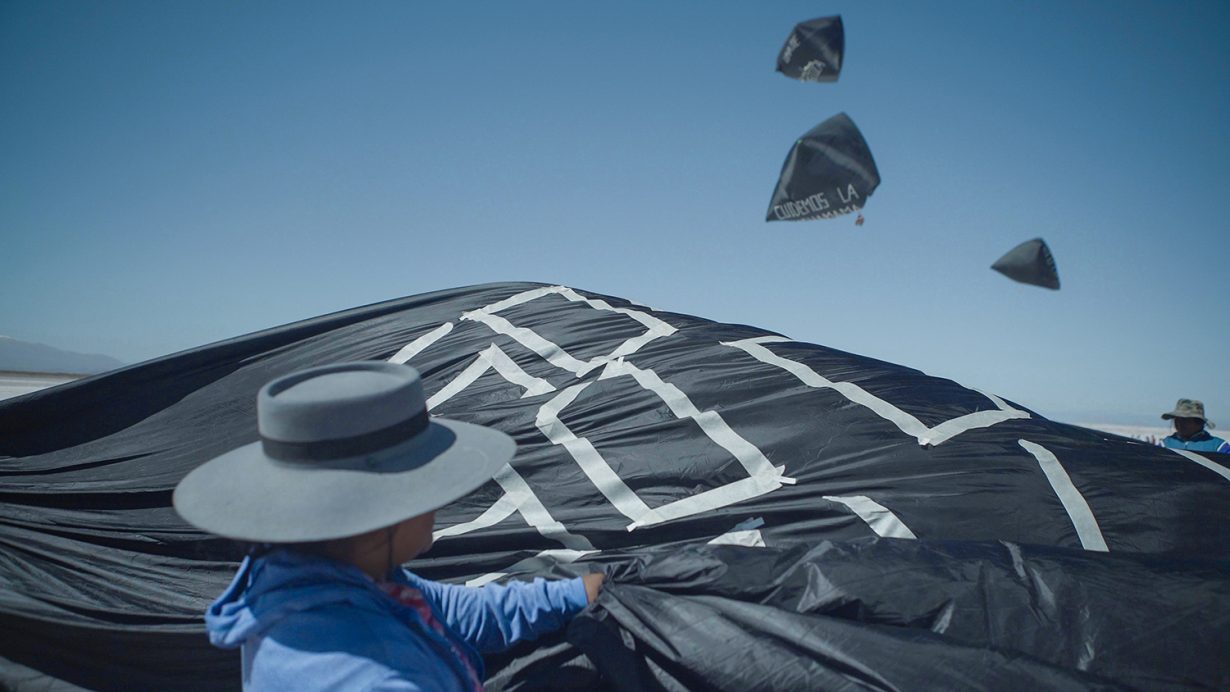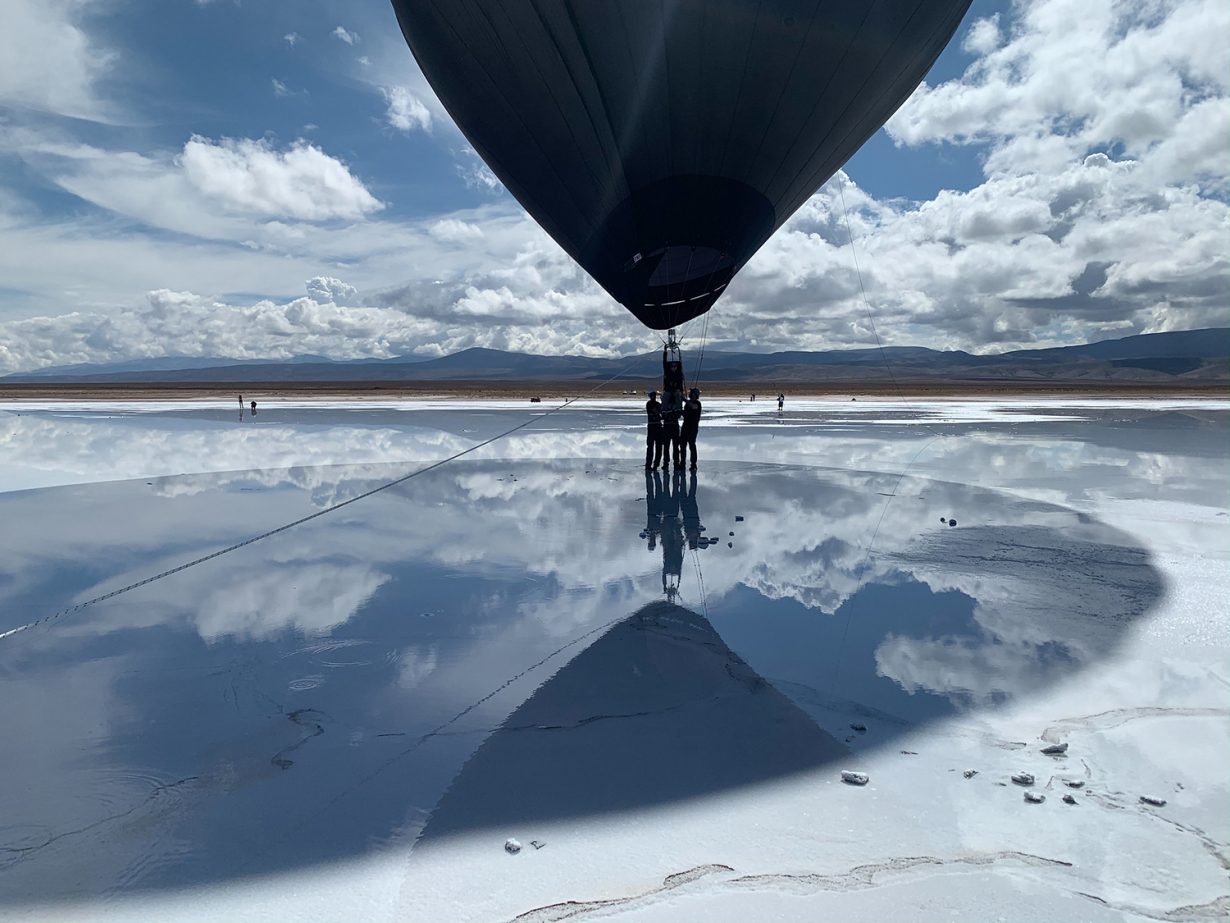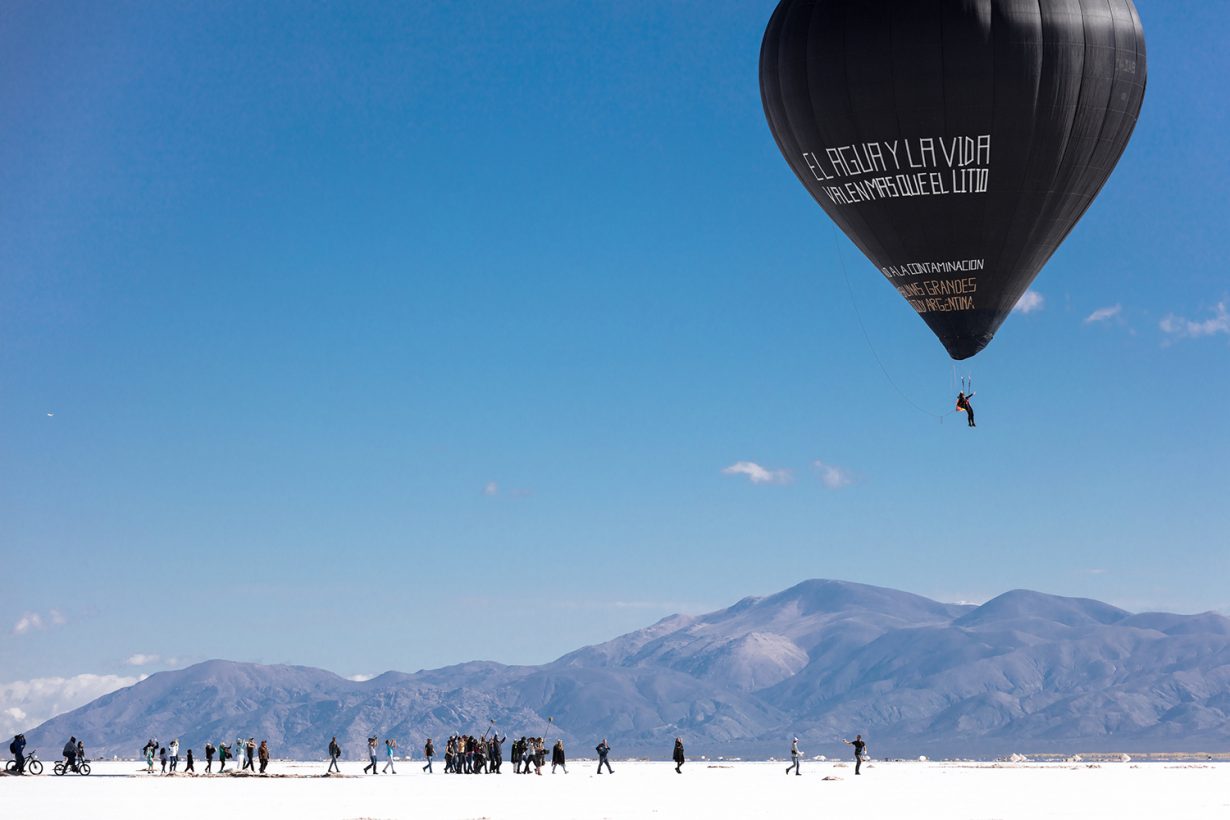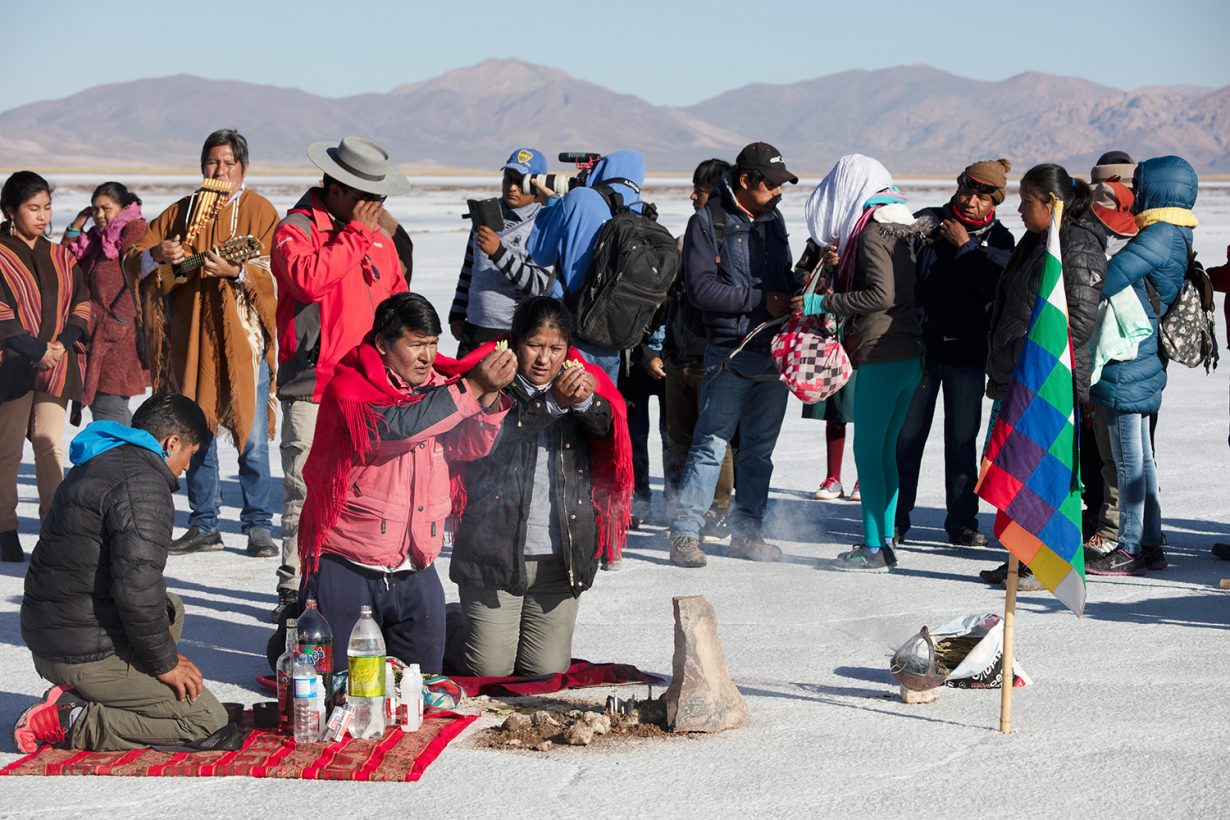The work’s messages of community, connectedness, nonviolence, freedom and resistance feel more profound than ever
On 22 January 2020 the artist Tomás Saraceno officially launched Fly with Aerocene Pacha, a balloon-like sculpture piloted by Leticia Marques and powered by the action of the sun on a contained body of air. Launched at Salinas Grandes in Jujuy, Argentina, and part of the global public-art project CONNECT, BTS, it travelled 1.7km in 21 minutes. The project as a whole, which took place between 21 and 28 January, set six world records in various categories and marked the latest step in a project that the Argentinian artist has been evolving over the course of more than two decades of collaborative research and experimentation, and through one broken back (his own). Since then, most of the world has gone into lockdown as a result of the COVID-19 pandemic, and the work’s messages of community, connectedness, nonviolence, freedom and resistance feel more profound than ever.

Moreover, the work represents the notion that art as a discipline is intricately connected to those traditionally considered discrete: science, mathematics, engineering, ecology and sustainability, to name a few. After studying architecture in Argentina, Saraceno relocated to Germany, where he began working with the art department of Frankfurt’s Städelschule. He has since studied at NASA’s Ames Research Centre, in Mountain View, California (2009), and he has been a visiting artist at the Massachusetts Institute of Technology since 2012, as well as collaborating with Germany’s Max Planck Institute and the Natural History Museum in London. Perhaps more importantly, at a time when others vociferously doubt it, the Aerocene project speaks to the idea that art can have an identifiable use-value too. One that goes beyond its current generally accepted function as a subsection of the tourism and leisure industries, or as a vehicle through which to circulate, generate and protect wealth and the status commonly associated with that. Though that’s not to say that leisure – in the sense of ‘fun’ – is not a part of it.

In November 1919 H.G. Wells began publication of his illustrated The Outline of History, in which the celebrated British author chronicled the history of the world from its origin until the end of the First World War in 24 fortnightly instalments. It was a work that he continuously revised until 1937. By 1941 it had become a sufficient staple of school history lessons to be referenced in John Huston’s film The Maltese Falcon. In one of the later versions, the final page of Wells’s narrative offers a painted illustration, commissioned from F. Collins, titled THE RANGE OF MAN’S LIFE EXTENDS CONTINUALLY. It depicts the Italian-built airship Norge carrying the explorer Roald Amundsen across the North Pole, its undercarriage illuminated by the light of a rising sun coming up above the ice. In a sense, Saraceno’s project, with its practice (and thus, hopefully, message) of a nonviolent exploitation of natural resources glosses Wells’s pronouncement to suggest that the range of all life, human and nonhuman, might extend continually. Perhaps, in doing so, it avoids some of Wells’s tendencies towards pomposity too.

In 1979 Kenneth Gatland and David Jefferis published The Usborne Book of the Future: A Trip in Time to the Year 2000 and Beyond. Under the heading ‘Airships to make a comeback?’ it speculates that ‘airships are ideal for use in countries where there is no developed road or rail system. They can carry heavy loads and deliver them without needing an airport.’ Beneath a picture of a black- and-white airship (that looks rather like an orca), it continues: ‘This airship is designed for use in hot sunny countries. Its beetle-like shell contains thousands of solar cells which generate electricity to power the propulsion motor at the rear and two small manoeuvring motors at the waist.’

Pacha is an Incan concept relating to the division of the different spheres of the unified cosmos. The pachas were used to designate realms that are both spatial and temporal, and incorporate the Yanantin dualism, in which opposites are interdependent, that characterises many indigenous Andean philosophies. For Saraceno this translates to the slogan ‘We are flying with our head in the clouds but our feet on the ground’.

In keeping with the themes of nonviolence and community, Saraceno describes the Aerocene Pacha project as developing in solidarity with the 33 indigenous communities in the Salinas Grandes region, where the so-called green rush to mine lithium for batteries (extracted by pumping beneath the salt plains: two million litres of water are required to mine each ton of lithium) is having the knock-on effect of polluting local drinking water (in addition to decimating agriculture and violating those communities’ belief systems, which oppose extraction practices). Between 2015 and 2018, investment in lithium exploration and production in Argentina grew by 928 percent. Thirty-six percent of Argentina’s reserves are contained within the province of Jujuy. At the official launch of Aerocene Pacha, members of the communities of Tres Pozos, Pozo Colorado, San Miguel del Colorado and Inti Killa de Tres Morros blessed Mother Earth and protested against the exploitation of their land rights, of which they are not the only victims. ‘Salinas Grandes no se toca el agua vale mas que el litio’ [Don’t touch the water in Salinas Grandes, water is more valuable than lithium], read one banner. As much as Aerocene Pacha is an expression of freedom, it is also an expression of resistance.

CONNECT, BTS is a global initiative, featuring 22 contemporary artists, developed by a group of international curators under the artistic direction of Korean curator Daehyung Lee. The project aims at exploring diversity, interdisciplinarity, connectivity, new synergies and a greater respect for the interconnectedness of the world around us. For more information visit connect-bts.com
The Aerocene project is open-source and collaborative. For more information visit Aerocene.org

